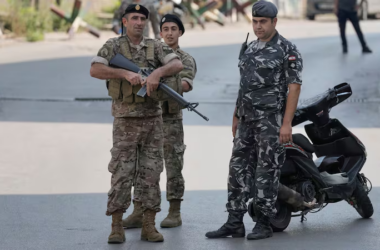As Myanmar continues to grapple with political turmoil following the 2021 coup that ousted Nobel laureate Aung San Suu Kyi’s civilian-led government, a formidable resistance has emerged in the form of Operation 1027. This major offensive, launched in October by the Three Brotherhood Alliance, a coalition of powerful ethnic armies, poses the most significant challenge to the military junta’s rule. The operation unfolded against the backdrop of peace talks held near the China-Myanmar border, where the rebels engaged in a double game, secretly laying the groundwork for a sweeping offensive.
Operation 1027 showcased unprecedented cooperation among the ethnic armies forming the Three Brotherhood Alliance. The alliance, comprising the Myanmar National Democratic Alliance Army (MNDAA), the Ta’ang National Liberation Army, and the Arakan Army, initiated a coordinated effort named after its commencement date, late October 2022. A notable development was the creation of Brigade 611, a multi-ethnic force that included troops from entities supported by the parallel civilian government, the Arakan Army, and the Bamar People’s Liberation Army.
Amidst the conflict, tensions between China and the Myanmar junta escalated due to rampant crime along the border. China, a key ally of the junta, expressed impatience over the junta’s failure to address criminal activities, particularly online scam centers causing public security challenges for China. Over 20,000 people, mainly Chinese, were estimated to be held in these centers in northern Myanmar as of October. The Chinese government issued an ultimatum to eliminate the compounds or face intervention, contributing to the conditions that supported the rebels’ offensive.
Brigade 611, formed by members of the Three Brotherhood Alliance and five other armed groups, played a crucial role in Operation 1027. Comprising troops from different regions and ethnicities, the brigade demonstrated close coordination and unprecedented collaboration, leveraging unconventional tactics such as drone strikes. Drone-dropped bombs, utilized by rebels with assistance from purported foreign drone experts, became a game-changer, leading to the abandonment of some military posts by the junta forces.
Operation 1027 began in northern Shan State, capturing military outposts, towns, and border gates within a month. The success of the offensive prompted the rapid expansion of anti-junta operations to other parts of Myanmar, including central regions and states near India and Bangladesh. The rebels, supported by the People’s Defence Forces (PDF) backed by the parallel National Unity Government (NUG), aim to stall military reinforcements and control various territories.
While China exerts influence over certain rebel groups, especially those ethnically Chinese, it does not control them entirely. The rising frustration in Beijing over the junta’s inability to address criminal activities along the border has complicated China’s position. The escalating tensions and the rebels’ offensive have created a complex diplomatic dilemma for China, caught between supporting the junta and navigating its relations with the emerging resistance.
Operation 1027, led by the Three Brotherhood Alliance and Brigade 611, represents a formidable challenge to the Myanmar junta’s rule. The offensive, marked by unprecedented cooperation and unconventional tactics, has exposed underlying tensions between China and the junta. As anti-junta operations continue to unfold and the dynamics in Myanmar evolve, the complex interplay between regional powers, rebel groups, and the junta adds layers of uncertainty to the already volatile situation in the country.








